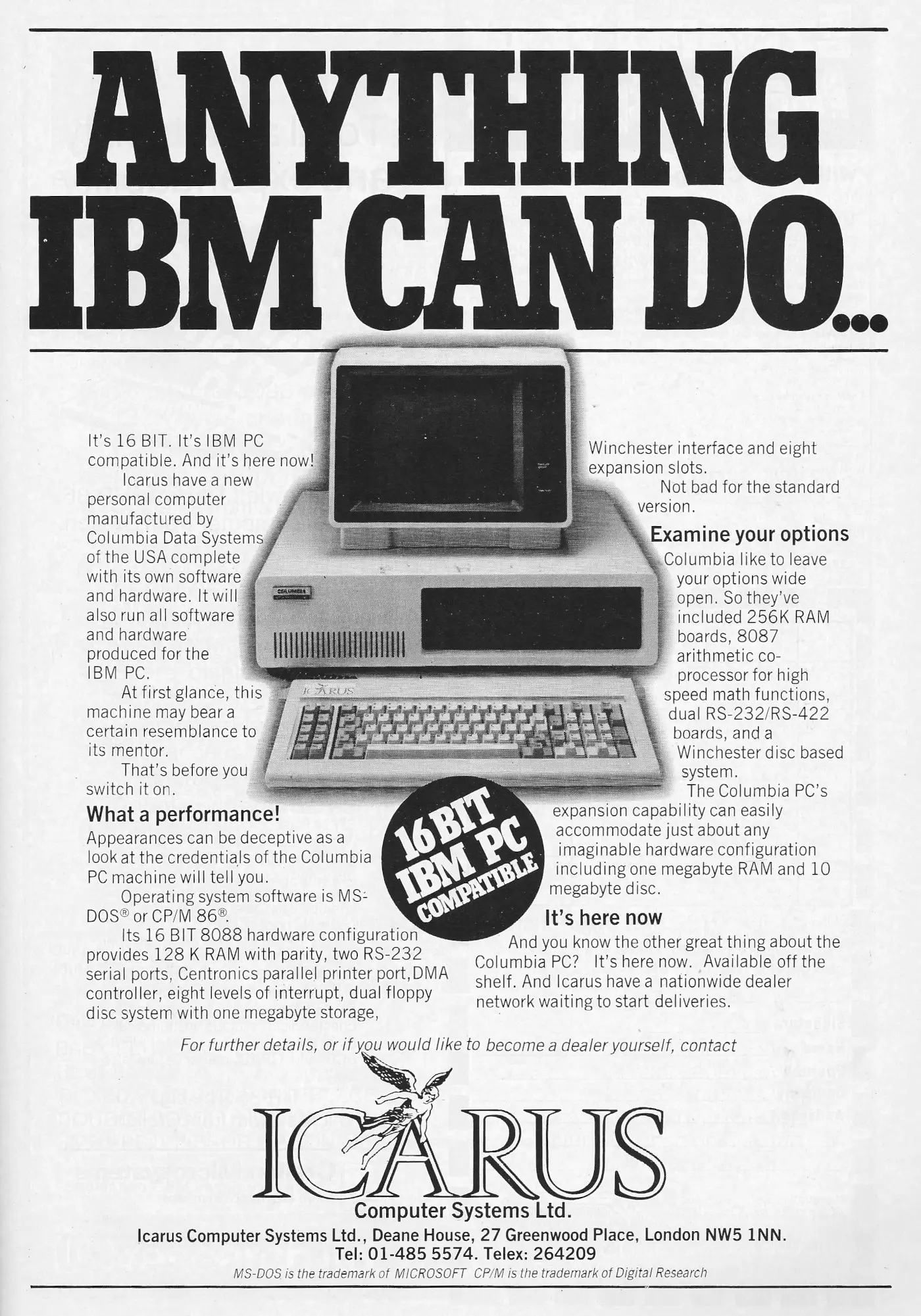Columbia Advert - November 1982
From Personal Computer World

Columbia PC: Anything IBM can do...
This is an advert for a hugely-significant machine in the history of the microcomputer - in particular that of the modern PC, in the IBM sense.
It's for Columbia Data Products' PC - the first legal IBM 5150 clone.
IBM's 5150 PC was something of a panicked response to the explosion of the microcomputer market in the early 1980s. Because of time pressures, the design team at IBM's Boca Raton facility decided to use off-the-shelf parts to build its new micro.
The only thing proprietary about it was the machine's BIOS - the built-in system that enabled the computer to start up and access all its hardware. IBM considered this to be fairly uncopyable and so it saw no issue in published the specs so that third party companies could build add-in cards.
As soon as the 5150 was released in 1981, other companies saw the flaw in this plan, and the race was on to clone it. Columbia Data Products was the first to do so - using a clean-room implementation of the IBM BIOS, so it was legally safe.
Not only that, but as a clone it was much better than the 5150. It had more memory, more expansion slots and provided things like parallel and serial ports that were extras on the IBM.
This set the pattern for the next 20 or so years: IBM would release something relatively pedestrian, but that was, er, IBM, so banks and corporates would buy it, and then cloners would make better and cheaper versions that everyone else actually bought.
What's also telling is that after the IBM 5150 launched, it didn't reach the UK until the following year. The Columbia PC launched in the US in June 1982, and it was already being shipped into the UK in quantities large enough to advertise - in this case by Icarus Computer Systems - just a few months later.
Despite its head start, Columbia didn't survive for very long in the cut-throat world of the IBM clone where margins were almost non-existant and more manufacturers piled in on an almost-daily basis.
The company filed for Chapter 11 bankrupty in May 1985, although after restructuring it continued as a software company which still exists as of 2025[1].
Meanwhile, its remaining stock was still appearing in specialist second-hand or defunct-computer retailers into the following year, with examples of the Columbia PC retailing for $1,200 - half its original cost - in the spring of 1986[2].
Date created: 19 December 2023
Last updated: 23 January 2025
Hint: use left and right cursor keys to navigate between adverts.
Sources
Text and otherwise-uncredited photos © nosher.net 2025. Dollar/GBP conversions, where used, assume $1.50 to £1. "Now" prices are calculated dynamically using average RPI per year.